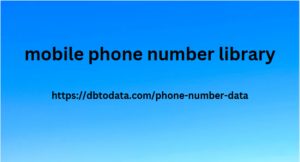What is Bounce Rate
Bounce Rate, or bounce rate, determines the percentage of visitors who leave the site immediately after loading. They do not spend more time on it, do not go to other pages – in a word, do not perform any target actions.
This indicator will help
track how effective the resource is: how it retains visitors.
At what step users “drop off” and what encourages them to spend more time on the site.
It is believed that the fewer bounces, the higher the conversion to actions – the main indicator of the effectiveness of an Internet resource. And here’s why:
A low Bounce Rate shows that visitors find the information they need on the mexico phone number data site and continue to interact with the
content. This forms a positive impression of the resource and increases the chance of returning.
The longer a visitor stays on the site, the higher the likelihood that they will perform a target action. For example, buy a product, subscribe to a newsletter or fill out a personal profile.
Minimizing bounces helps increase conversion: the fewer visitors leave, the higher the likelihood of a target action. Working on this indicator will not only help optimize the site, find problem areas and deal with them, but also increase sales, raise the level of engagement and expand the audience.
Bounce Rate also affects SEO – search engines track bounce statistics and lower the site’s rating: they place the Internet resource at the bottom of the search results.
How to determine the bounce rate
Analyzing the Bounce Rate indicator is the first step to optimizing the site. For this, various tools are used that provide information about user behavior. The higher the value, the worse. This means that you are losing potential buyers.
The bounce rate is calculated as follows: the number of visitors who closed the site after 15 seconds, divided by the total number of visitors and multiplied by 100. For example, 200 users visited the resource in a day. 50 of them closed the site at 10 seconds. The bounce rate will be 25%.
Bounce Rate does not need to be calculated manually – all statistics are build Your first website step available in the site analytics. Here are the most popular services for tracking bounce rate:
Google Analytics. Provides detailed statistics on how users interact with your site. Shows how many people leave the site after viewing only one page.
Google Analytics tracks user visits in sessions. A session begins when a person visits your site and ends when a certain amount of time passes.
Without activity (usually 30 minutes) or when the visitor loan data loses the browser window. If they leave the site after viewing only one page without interacting with it or going to other pages, this is considered a bounce.

